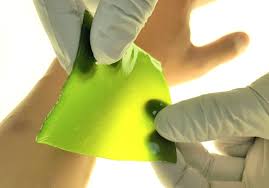Welcome to Ability Network International (ANI)
ACUTE AND CHRONIC WOUND CARE PORTAL
ANI is a distributor of products and provider of related services for doctors and clinics specializing in effective and expedited treatment of Acute and Chronic wounds.
Acute Wounds
An acute wound is a sudden injury to the skin that happens unexpectedly, rather than developing gradually. Acute wound can also happen as result of planned surgical or another invasive procedure. It typically heals at a predictable rate, following the normal wound healing process. Healing time for a typical acute wound can be from a few days to 6 weeks. Acute wounds can appear anywhere on the body and range from minor scratches to deep injuries that may affect blood vessels, nerves, muscles and other organs
Examples of acute wounds can include:
-
Traumatic wounds, which occurred suddenly, unplanned and can range from minor wounds, such as knee scrape, to much more serious and dangerous wounds, such as animal bites, gunshots or knife stabbings. -
Surgical wounds, which are precise incisions performed by a highly-trained surgeon or specialty physician. Such incisions usually have clean edges and can be closed with stitches, staples and adhesive, or left open to heal on their own. -
Burns, which are types of traumatic injuries to skin and other bodily tissues caused by exposure to heat, cold, chemicals, electricity, friction or radiation. The severity of a burn is categorized by categories:-
First-degree (superficial) burns affect only the outer layer of skin, known as the epidermis. They appear red and do not form blisters, with pain usually lasting around three days.
-
Second-degree (partial thickness) burns involve the epidermis and part of the dermis, the lower layer of skin.
-
Third-degree (full thickness) burns can damage deeper tissues, potentially leading to loss of pain and sensitivity due to nerve damage.
-
Acute wound healing is a complex process that results in the restoration of cell structures and tissue layers after an injury. Topical preparations for wound care, such as jells and dressings, have been used for centuries and play a major role in wound management. Dressings protect the wound and keep it moist, thereby promoting healing. Some wounds, however, such as diabetic, dry, gangrenous toes require a moisture-free environment for effective healing.
When choosing a wound dressing it is important to consider the wound’s classification, the patient’s medical history and activity level before surgery, and cost. The best dressing for a wound may be a combination of different dressings with different attributes.
Learn about ANI’s surgical dressing program by pressing the button below
Chronic Wounds
Chronic wounds are those that do not progress through a normal, orderly, and timely sequence of repair and do not close in the 30-day period of time. They are, unfortunately, common and often not classified as chronic on a timely manner and incorrectly treated. If left untreated, chronic wounds can lead to infection or amputation. The morbidity of chronic wounds and the enormous cost burden they can present to the patient, medical insurance and the healthcare system overall, affecting over 7 million patients annually in the US. It is clear that chronic wounds require timely and effective detection and management.
While no two chronic wounds are identical and the conditions under which they became chronic may be different, most of the chronic wounds fall into the following categories: Diabetic Foot Ulcers, Venous Stasis Ulcers, Arterial Ulcers, Bacterial Infection Wounds, Chemical Wounds, Radiation Wounds.
Main reasons for chronic wounds are usually one or several of the following:
-
Diabetes: Diabetes is an underlying medical condition that can cause chronic wounds. -
Poor circulation: Wounds heal more slowly when blood flow is poor, which can be caused by peripheral artery disease (PAD) or venous insufficiency. -
Immobility: Pressure injuries, also known as bed sores, can occur when there is persistent pressure on the skin, such as from prolonged sitting in one position or being bedridden. -
Trauma: Significant injuries to the skin can cause chronic wounds. -
Surgery: Surgical incisions can become infected and heal slowly. -
Immunosuppression: Immunosuppressive agents, such as corticosteroids, sirolimus, and chemotherapeutic agents, can negatively impact healing. -
Antibiotic-resistant bacteria: Some bacteria, like Pseudomonas Aeruginosa, are resistant to antibiotics and can affect people with compromised immune systems. -
Lifestyle: Smoking, alcohol abuse, poor diet, and a sedentary lifestyle can all contribute to chronic wounds.
Learn about ANI’s chronic wound program by pressing the button below


